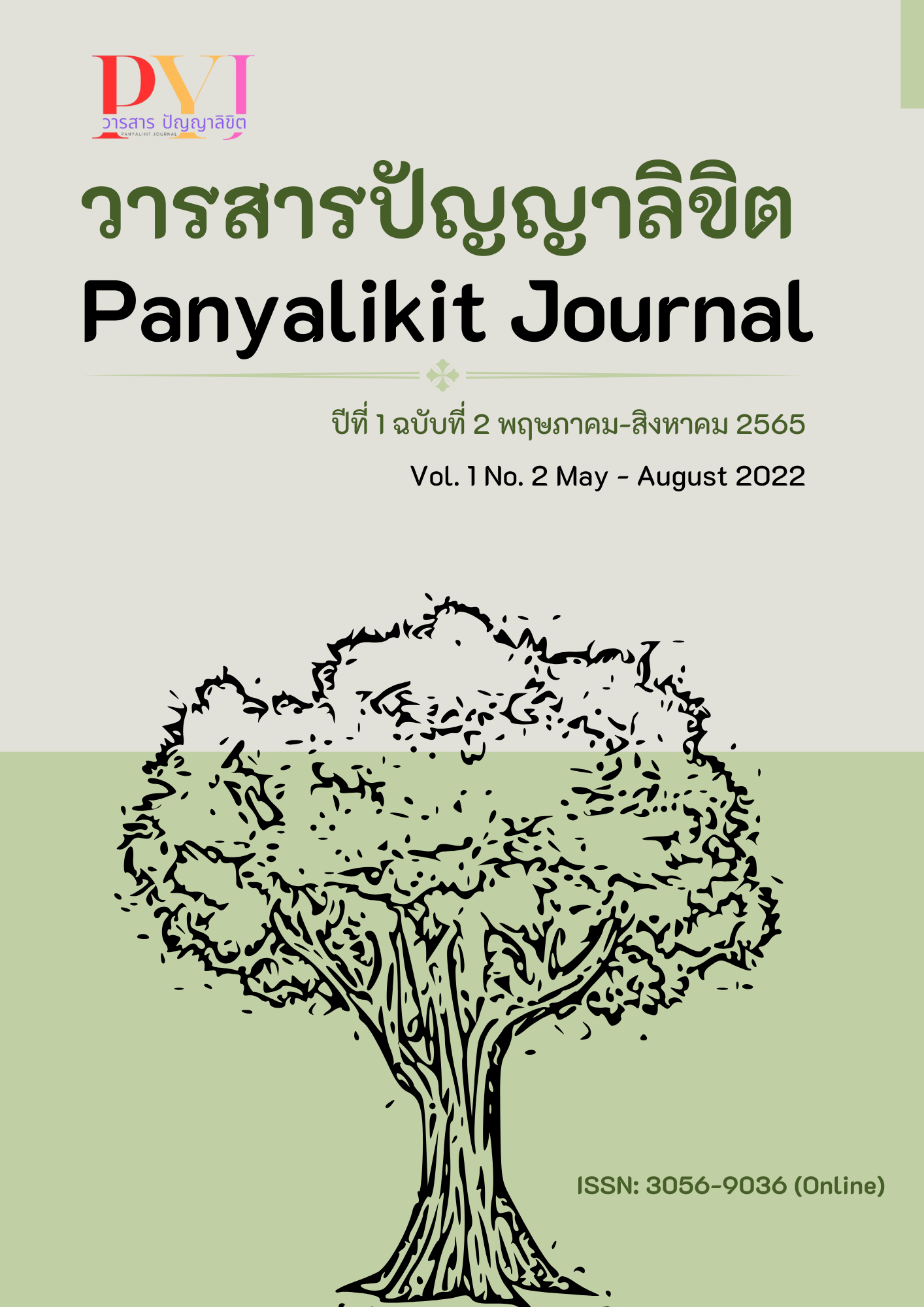Integration of Faith (Saddha) for Improving the Quality of Life
Main Article Content
Abstract
The article aimed at integrating faith for the quality of life. It found that there is a principle that can help improve the quality of life to be complete that leads to greater happiness. That's four faiths. This means that faith is believed in the law of meditation, which is to believe the result of the Cambodian karma, which is to believe that animals have their own karma. In Buddhism, a Buddhist principle is the belief that affects the development of Buddhism, the perception of individuals and the understanding of their own life status and the living values. By integrating faith in the context of a culture that connects its objectives, expectations, standards and concerns, and interests that can improve the quality of life in a variety of aspects: physical, mental state, social level, personal beliefs, and environmental relationships. Therefore, the integration of faith with the quality of life is a process of learning through real life, based on ability and desire. This allows developers to change their behavior, improve their cognitive and mental behavior, and apply their knowledge and capabilities to their daily lives.
Article Details

This work is licensed under a Creative Commons Attribution-NonCommercial 4.0 International License.
References
ชาญชัย อินทรประวัติ. (2547). การพัฒนาคุณภาพชีวิต. นครราชสีมา: เอเชียสาส์น.
ชุมพร ฉ่ำแสง และคณะ. (2555). ปัจจัยที่มีผลต่อคุณภาพชีวิตของบุคลากรฝ่ายการพยาบาลศูนย์การแพทย์สมเด็จพระเทพรัตนราชสุดาฯ สยามบรมราชกุมารี จังหวดนครนายก (รายงานการวิจัย). มหาวิทยาลัยศรีนครินทรวิโรฒ.
นิด้าโพล. (2562). คุณภาพชีวิตของคนไทยในรอบปีที่ผ่านมา และการคาดการณ์ในปี 2562. สืบค้นเมื่อ 27 มกราคม 2562, จาก http://nidapoll.nida.ac.th/index.php?op=polls-detail&id=632
พระพรหมคุณาภรณ์ (ป.อ.ปยุตฺโต). (2549). การพัฒนาที่ยั่งยืน. กรุงเทพฯ: โกมลคีมทอง.
มหาจุฬาลงกรณราชวิทยาลัย. (2539). พระไตรปิฎกภาษาไทย ฉบับมหาจุฬาลงกรณราชวิทยาลัย. กรุงเทพฯ: มหาจุฬาลงกรณราชวิทยาลัย.
มหามกุฎราชวิทยาลัย. (2522). วิทสุทธิมรรค. แปล ภาค 3 ตอน 1. พิมพครั้งที่ 2. กรุงเทพฯ: มหามกุฎราชวิทยาลัย.
วรรณสิทธิ ไวทยะเสวี. (2527). คูมือการศึกษาพระอภิธรรมมัตถสังคหะ ปริเฉทที่ 2 เจตสิกสังคห วิภาค. กรุงเทพฯ: ธเนศวรการพิมพ์.
ศิริ ฮามสุโพธิ์. (2543). ประชากรกับการพัฒนาคุณภาพชีวิต. กรุงเทพฯ: โอ.เอส.พริ้นดิ้ง.
ศิรินันท์ กิตติสุขสถิต และคณะ. (2557). คุณภาพชีวิต การทำงาน และความสุข. พิมพ์ครั้งที่ 2. นนทบรี: อัพทรูยู ครีเอทนิว.
หลวงเทพดรุณานุศิษฎ. (2518). ธาตุปฺปทีปกา. กรุงเทพฯ: มหามกุฏราชวิทยาลัย.
Maslow, A.H. (1943). A Theory of Human Motivation. Psychological Review, 50(4), 370-396.
WHOQOL Group. (1994). Development of the WHOQOL: Rationale and current status. International Journal of Mental Health, 23, 24-56.


